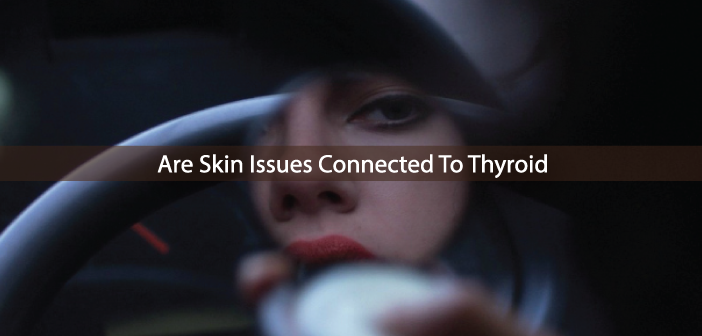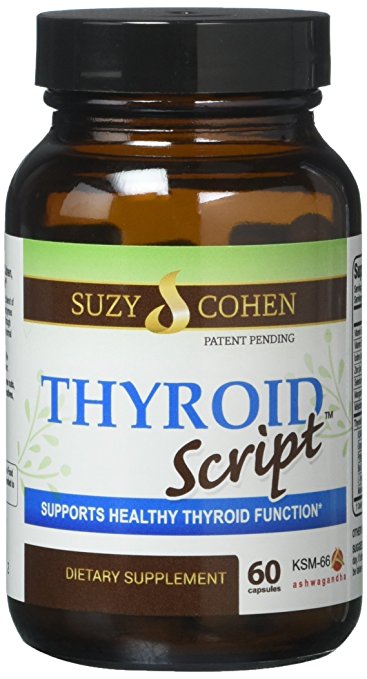
Thyroid Foundation of Canada
Thyroid Nation
The thyroid, skin and disease connection.
The skin is the covering on our bodies – “our bag”. It is made up of an outer layer called the epidermis. The epidermis itself is formed by stacks of skin cells like bricks with mortar between them. The bottom layer of the “brick wall” is made up of the mother cells. These cells divide on a regular basis and as these cells mature and progress up through the layers of bricks they eventually form a somewhat impermeable layer called the stratum corneum that protects us from our environment. Underneath the epidermis is the foundation layer or the dermis. The dermis is made up of connective tissue and in it are the blood vessels, nerves, glands and hair. How does it connect with our thyroid?
The functioning of the skin depends on the general status of the body and it is controlled by hormones like the thyroid. Hair growth particularly depends on thyroid hormone. Grease glands (sebaceous glands that produce grease or sebum) also are affected by the thyroid. The actual thickness of the skin depends on thyroid function.
Hypothyroidism
In hypothyroidism there is a slow metabolic rate due to alteration of glandular function. This may be due to an autoimmune disease where for some reason the body destroys itself such as in HASHIMOTO’S THYROIDITIS or secondary failure due to tumour, infection or trauma. The slowed metabolic function results in insidious onset of tiredness, fatigue, leg cramps, etc. The skin is cold, dry and pale. The dryness can be extreme so that there is no sweating and the palms and soles get thick and dry (keratoderma).
The skin colour can be yellow due to alteration in Vitamin A metabolism – carotenemia.
Hair is lost all over – scalp, groin, even lateral eyebrows. Nails grow slowly and are brittle and thick.
The most common skin change is a generalized myxedema or swelling due to a build-up of ground substance in the foundation of the skin (dermis). The skin is swollen, dry, pale and waxy. One can slowly develop a broad nose, swollen lips and puffy eyelids. Wounds heal slowly.
 Skin Changes in Hypothyroidism
Skin Changes in Hypothyroidism
- Pale, cold, scaly, wrinkled skin
- Coarse, dry scalp and hair
- Absence of sweating
- Hair loss – scalp groin, lateral eyebrows, etc.
- Skin colour – ivory – yellow
- Puffy edema (hands, face, eyelids)
- Brittle thick nails
- Eczema craquele
- Bruising
- Poor wound healing
Thyroid disorders are sometimes associated with other diseases and skin changes:
- Alopecia Areata is a condition in which there is sudden loss of circular areas of scalp hair and at times there can be generalized loss of scalp and body hair. Thus it may be patchy or generalized.
- Pemphigus/Pemphigoid are autoimmune blistering disorders of the skin in which one can develop open sores on the skin in cases of Pemphigus or large blisters of the skin and itching as in bullous pemphigoid.
- Lupus erythematosus is a condition of unknown etiology in which inflammation in the body develops a variety of patterns. Many organs can be involved: brain, heart, lung, skin, kidney, joints, etc. The skin changes are variable but can result in well-defined scaling, scarring lesions or fixed red, circular rashes most notably over sun exposed areas.
- Vitiligo is a white patch disease. Here the body has rejected the pigment cells of the skin resulting in the onset of areas of varying size with no pigment, particularly over the joints – knuckles of the fingers, wrists, knees, etc. The resulting colour change makes one look almost like a “pinto pony”. These areas sunburn very easily.
- Scleroderma is a condition in which the skin becomes very scarred and bound down, at times resulting in contractures of the fingers with ulceration of fingertips and loss of function.
Overall the most common problem associated with thyroid disease is dry skin associated with hypothyroidism. This is worse in the winter with low humidity and is aggravated as we get older.
Treatment for dry thyroid skin:
-
- Avoid harsh irritating soaps and lotions, try using essential oil blends instead.
- Use a cleansing bar just where one is dirty – hands, groin, axilla.
- Have a soak in the tub daily (not too hot). (maybe with some Epsom Salt)
- After soak use a moisturizer or essential oils blend, applied to the skin while the skin is moist to hold the moisture in.
**Article originally featured on Thyroid.ca**
PLEASE take a moment to ‘Like’ us on Facebook and follow us on Twitter and Periscope. You can also listen to Tiffany and I on Thyroid Nation RADIO, every Sunday.



